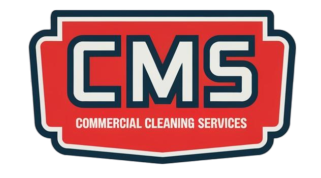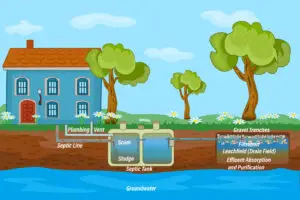Water emergencies can strike at any moment. Whether caused by natural disasters, burst pipes, or appliance malfunctions, excess water can wreak havoc on your property within minutes. Emergency water removal services provide the rapid response you need to minimize damage, protect your belongings, and restore your home or business to its original condition.
In this comprehensive guide, we’ll cover everything you need to know about emergency water removal, including its importance, the process, benefits, and steps you can take to prevent water damage in the future.
What is Emergency Water Removal?
Emergency water removal refers to the swift extraction of water from your property to prevent further damage and mitigate potential health risks. Whether it’s clean water from a broken pipe or contaminated water from flooding, timely removal is critical to preserving the structural integrity of your home and ensuring a safe environment.
Water emergencies often include:
- Flooding from storms or heavy rains.
- Burst pipes or plumbing leaks.
- Appliance failures like overflowing washing machines or water heaters.
- Sewage backups or sump pump failures.
Why is Emergency Water Removal Crucial?
Time is of the essence during a water emergency. Delaying water removal can lead to significant problems, including:
Structural Damage
Water can weaken walls, ceilings, floors, and even the foundation of your property. Prolonged exposure can result in costly repairs.
Mold Growth
Mold thrives in damp environments and can begin growing within 24-48 hours. Mold spores pose serious health risks, including respiratory issues and allergies.
Damage to Belongings
Water can quickly destroy furniture, electronics, important documents, and personal items if not removed promptly.
Health Hazards
Stagnant water and contaminated floodwater often harbor bacteria, viruses, and other toxins, posing significant health risks.
Increased Restoration Costs
The longer water sits, the more extensive the damage, leading to higher repair and restoration expenses.
Common Causes of Water Emergencies
Understanding the causes of water emergencies can help you respond quickly and prevent future incidents:
- Severe Weather Events: Heavy rains, hurricanes, and flash floods can cause basements and homes to flood.
- Burst Pipes: Aging or frozen pipes can burst unexpectedly, leading to rapid water accumulation.
- Plumbing Failures: Leaking or overflowing sinks, toilets, and water heaters are common culprits.
- Sump Pump Malfunction: When sump pumps fail, water can quickly flood basements.
- Sewage Backups: Blocked or overwhelmed sewer lines push contaminated water into homes.
- Appliance Leaks: Washing machines, dishwashers, and refrigerators can malfunction, causing significant water leaks.
The Emergency Water Removal Process
Professional emergency water removal services follow a proven process to ensure thorough and efficient water extraction and damage mitigation. Here’s a breakdown:
1. Emergency Contact and Assessment
The process begins with your call. Water removal specialists respond quickly, assess the situation, and determine the scope of the damage.
2. Water Source Identification and Stoppage
The source of the water is identified and stopped to prevent further flooding. For example, shutting off the main water supply in case of a burst pipe.
3. Water Extraction
High-powered pumps, vacuums, and extraction equipment are used to remove standing water quickly. Professionals ensure that all water, including hard-to-reach areas, is eliminated.
4. Drying and Dehumidification
After water removal, industrial fans, air movers, and dehumidifiers dry the affected area. This step is crucial to prevent mold growth and further damage.
5. Cleaning and Sanitization
Surfaces, walls, and belongings are cleaned, disinfected, and treated with antimicrobial solutions to eliminate bacteria and prevent odors.
6. Restoration and Repairs
The final step involves restoring your property to its original condition. This may include replacing damaged drywall, flooring, insulation, or structural repairs.
Benefits of Professional Emergency Water Removal Services
Hiring a professional emergency water removal service offers numerous advantages over DIY methods:
Rapid Response
Professionals are available 24/7 to address emergencies, minimizing damage and saving valuable time.
Advanced Equipment
Specialized pumps, vacuums, air movers, and dehumidifiers ensure thorough water removal and drying.
Expert Knowledge
Trained technicians understand how to handle different types of water damage, including clean water, gray water, and contaminated black water.
Mold Prevention
Professionals take steps to prevent mold growth, ensuring a safe and healthy environment for your family or employees.
Comprehensive Restoration
Water removal services often include full restoration, from cleanup to repairs, leaving your property looking as good as new.
DIY vs. Professional Emergency Water Removal
While small spills can be handled with DIY methods, larger water emergencies require professional intervention.
| Aspect | DIY Water Removal | Professional Services |
|---|---|---|
| Speed | Limited, depending on tools and expertise. | Fast response with advanced equipment. |
| Equipment | Basic tools like mops and wet vacuums. | Industrial-grade pumps, dryers, and fans. |
| Mold Prevention | High risk if drying isn’t thorough. | Comprehensive drying and mold prevention. |
| Restoration | Limited to cleanup. | Includes cleanup, sanitization, and repairs. |
| Health and Safety | Risk of contamination exposure. | Safe handling of contaminated water. |
For serious water emergencies, professional services save time, reduce risks, and ensure your property is fully restored.
Preventing Future Water Emergencies
While water emergencies are often unpredictable, there are proactive steps you can take to minimize risks:
Inspect and Maintain Plumbing
- Regularly check pipes, faucets, and appliances for leaks or corrosion.
- Replace aging plumbing systems to prevent sudden failures.
Install a Sump Pump with Backup Power
- A working sump pump prevents basement flooding. Ensure it has a battery backup for power outages.
Clean Gutters and Downspouts
- Keep gutters free of debris to allow water to flow away from your home.
Seal Foundation Cracks
- Waterproof your basement and repair foundation cracks to prevent seepage.
Monitor Appliances
- Check hoses on washing machines, dishwashers, and refrigerators regularly for signs of wear.
Invest in Flood Alarms
- Flood sensors alert you to leaks or rising water levels, allowing quick action.
FAQs
What is emergency water removal?
Emergency water removal involves the immediate extraction of water from a property to prevent damage, mold, and health hazards.
How quickly should I act after water damage occurs?
You should contact a professional service immediately, as mold can begin to grow within 24-48 hours.
Is emergency water removal covered by insurance?
In most cases, water damage from sudden incidents (like burst pipes) is covered. However, natural flooding often requires separate flood insurance.
How long does it take to remove water and dry a property?
The process can take anywhere from 24 hours to several days, depending on the extent of the water damage.
Can I perform water removal myself?
While small water issues can be managed, larger incidents require professional equipment and expertise to prevent further damage.
How can I prevent future water emergencies?
Regular maintenance of plumbing, sump pumps, gutters, and appliances can significantly reduce the risk of water damage.
Conclusion
When disaster strikes, emergency water removal services provide the rapid response and expertise needed to protect your property from extensive damage. By acting quickly, you can save your belongings, prevent structural issues, and avoid health risks like mold growth.
Professional services not only remove water efficiently but also restore your home to its original condition, giving you peace of mind during a challenging time. Stay proactive with regular maintenance and emergency preparedness to minimize the risk of water damage in the future.






